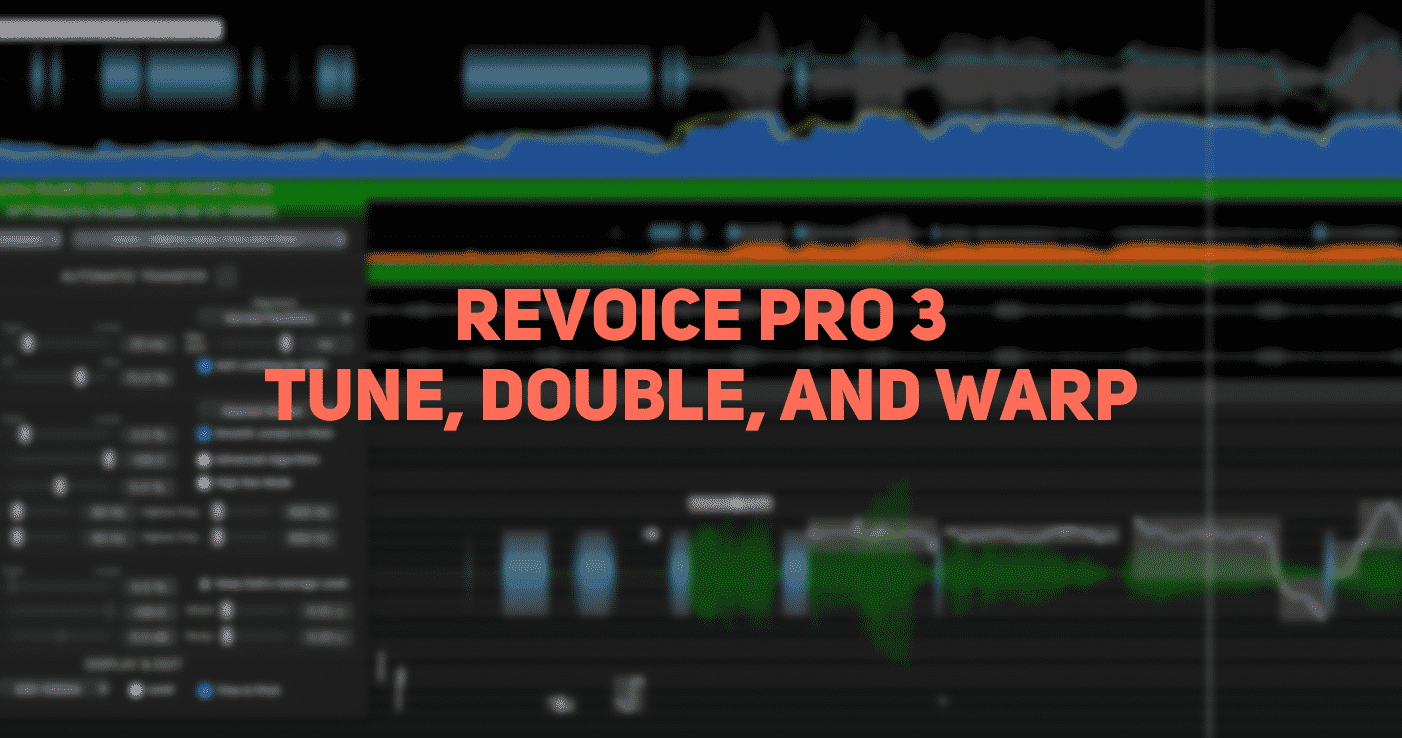
Revoice Pro 3 – Tune, Double, and Warp Audio
We recently had the opportunity to try out SynchroArts’ incredible timing and tuning software, Revoice Pro 3. Revoice Pro 3 can be used to process vocals or instruments that need corrections or fine-tuning (literally) done to their pitch and timing. Say you want to line up a pair of instruments playing the same melody line, you can do that. Want to synchronize the vocal phrasing during the takes of an artist you just recorded comps for? Done. Say that singer missed a few notes, just import the audio into Revoice Pro 3 and get to correcting! From warping, doubling, pitch adjustments in singing, instruments and ADR Revoice Pro 3 is a must-have for anyone working in the professional studio environment.
When first opening the software we were greeted with a stripped down version of an arrangement view found in most DAWs. It’s mostly black and green and looks like a hacker version of ProTools; in fact, it looks like we’re somewhere in the Matrix (which Revoice Pro was actually used during the postproduction on). Three audio tracks are displayed and you have the option to add more. Revoice Pro 3 operates as a standalone piece of software, SynchroArts cites processing speed as the primary reason for this and,
- The ability to implement and load audio into multi-input processes and process many tracks at the same time.
- A novel and effective “region-based processing” approach to audio processing in which inputs to processing modules are inserted where required along the timeline in Process Control Tracks and can have different settings along the same track.
- Simple, one-key controls of a “process-based auditioning” for rapidly auditioning combinations of input and output signals to check the quality of modifications.
- Modifications to Guide tracks can be automatically passed on to all tracks related to those Guides
- Support for a multi-track and multi-process environment with no limits on timecode positions and over 100 tracks – giving you maximum flexibility and speed of operations.
- Revoice Pro also allows multiple sessions to be open or one session open in multiple windows. For example, you can have multiple processing sessions open simultaneously and multiple views of any of those sessions.
- A consistent working environment inside Revoice Pro regardless of audio source
This is only a slight inconvenience in workflow, we actually felt we were able to focus better on the task at hand when limited to the functions Revoice Pro 3 is capable of. For all you other producers out there lacking attention then you may like being forced to work with the standalone software.
If you’re really put off by that prospect, there are plugins provided meant to aid you in the process of getting audio from your DAW into Revoice Pro; we did not utilize those link plugins when exploring the software so they will be left out of this review.
The interface is minimal in an what seems purely out of necessity, Revoice Pro 3 isn’t trying to replace your DAW for mixing or adding effects but it provides simple controls for you to monitor your audio until you’ve finished processing it. Each track has a scribble strip, volume slider, a pan slider, a mute button, a solo button, a shortcut to make fullscreen, and a lock button that will prevent edits to be made.
Transport control is located at the bottom of the screen. It is here that you can set the song key, change the grid to Bars & Beats for musical projects, and adjust the master/cue volume. You can also choose whether you’d like your playhead to play from where it stops or to replay from where you started it.
When working on your tracks you have to import the audio you want to work on in addition to the isolated backing tracks (assuming you want to hear those too). Bringing audio into the program is as simple as dragging audio files onto the tracks. However, it is important to note that not all audio formats are supported by Revoice Pro 3, only .WAV and .AIFF files work.
Once you’ve brought in all your audio files you can decide how you’d like to process it. You can choose to apply the APT (audio performance transfer) process, double the vocal take, adjust volume, warp it, or simply analyze it. The APT process is what separates Revoice Pro 3 from other software like Melodyne, Autotune, WavesTune, etc. It highlights a guide vocal take and copies the characteristics over to one or more dub tracks. Not only is it accurate, but it’s quick.
Processing a 3 minute and 30 second song’s worth of vocals and copying it to a dub track took about 8 seconds. You’ll end up with a tight vocal double that rivals and perhaps bests your singer doing it themselves. How tight or loose your double sounds compared to the original guide take will depend on the preset/settings you choose.
There are presets available but if you want to get more detailed with your approach you have many controls at your disposal. You can adjust the tightness of the performance timing, and all the parameters you would find with another autotuning application as well. Pitch tolerance, transfer strength (strength applied to the pitch correction), offset from the correct pitch – these are a few of the controls you can tweak. For pitch tuning you have the ability to manually cut, stretch, join, smooth and even draw in pitch curves.
Another parameter you have the ability to adjust is the volume level and the ‘energy’ of the performance. Energy is one of the toughest things to replicate even in a live performance so having that available within this software is amazing. If you want to manually adjust the timing/pitch/energy you have the ability to do so with these other processes.
All in all, we found the software to perform better than some competing tuning applications and was unparalleled in making timing and warping adjustments a simple task. Click a few buttons and you have a realistic vocal double that will fit right into your mix. Revoice Pro 3 shines when it comes to transparency, and holds even when pushing the pitch tuning to the extreme.
Not all voices all created equally so the timbre and tone of your singers may change more drastically than others but in our experience, you can move up and down one or two octaves and keep it sounding realistic. If you want the metallic robo-sound that is becoming ever-more popular then you’ll be able to achieve that as well by cranking the settings.
The learning curve for the software initially threw us off, and while you could spend your time right-clicking and trying to figure things out on your own we would suggest dedicating 10 minutes to watching the video below. Revoice Pro 3 is a definite powerhouse and if you find yourself tuning vocals and/or editing vocal takes for singers then this software will save you loads of time and lots of pain.
Revoice Pro 3 is available on the Synchroarts website for $599.
[su_vimeo url=”https://vimeo.com/175933339″ width=”780″]https://player.vimeo.com/video/173960913[/su_vimeo]
[divider style=”clear”]


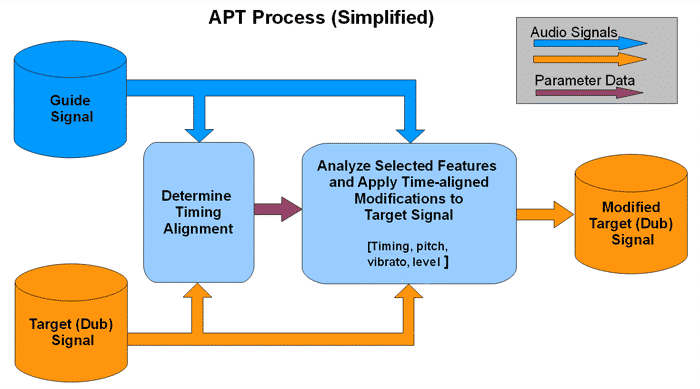

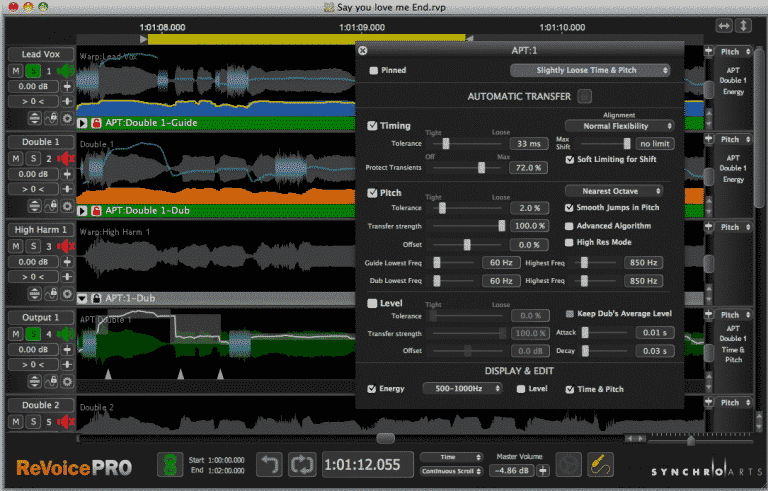

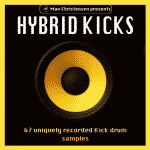

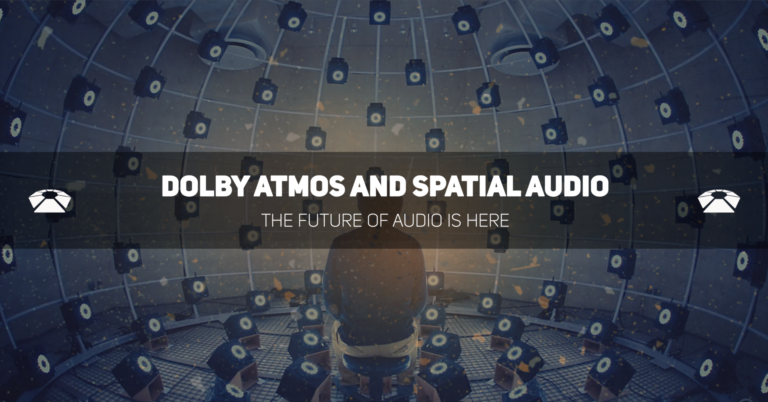


0 responses on "Revoice Pro 3 - Tune, Double, and Warp Audio"